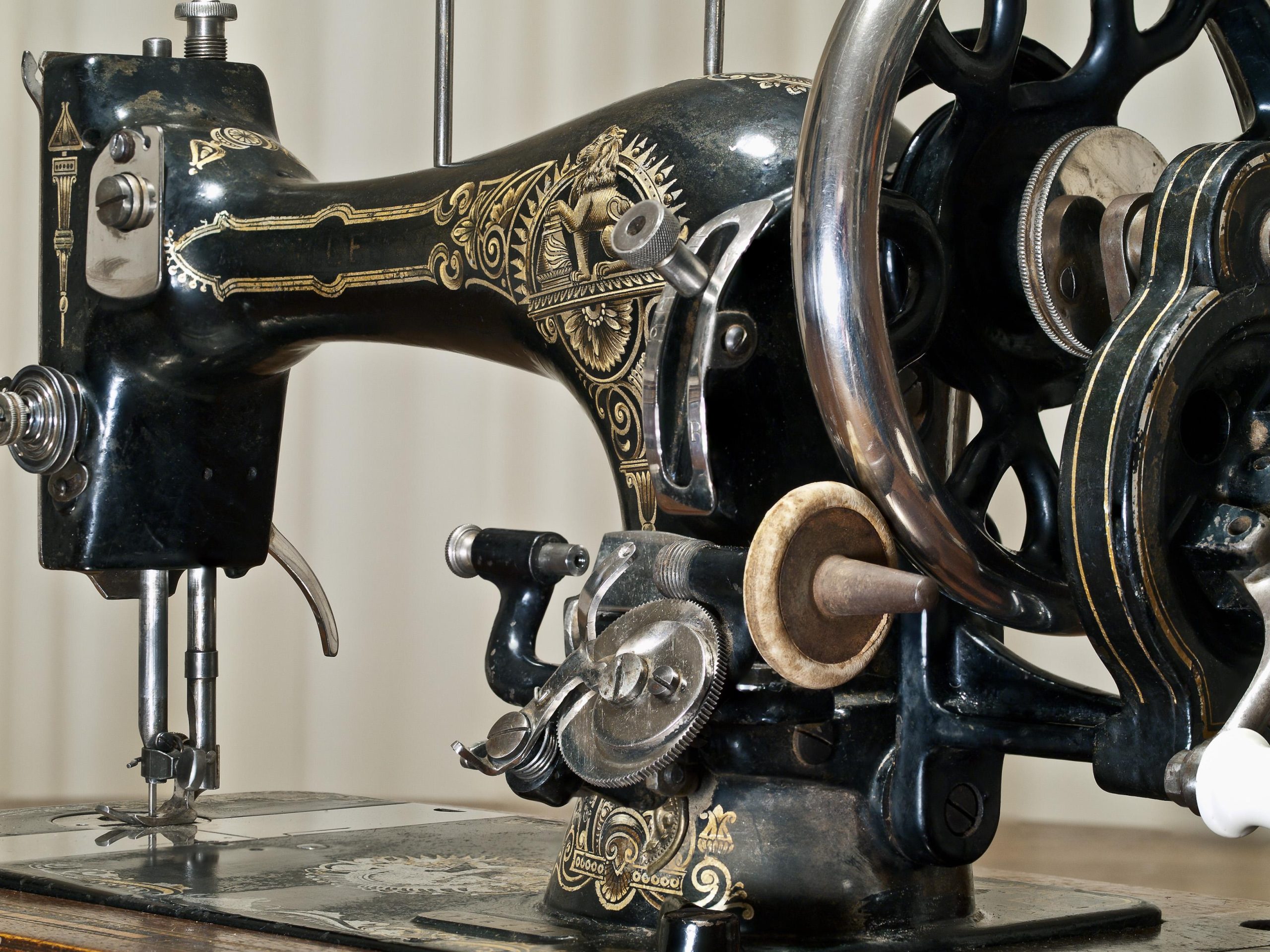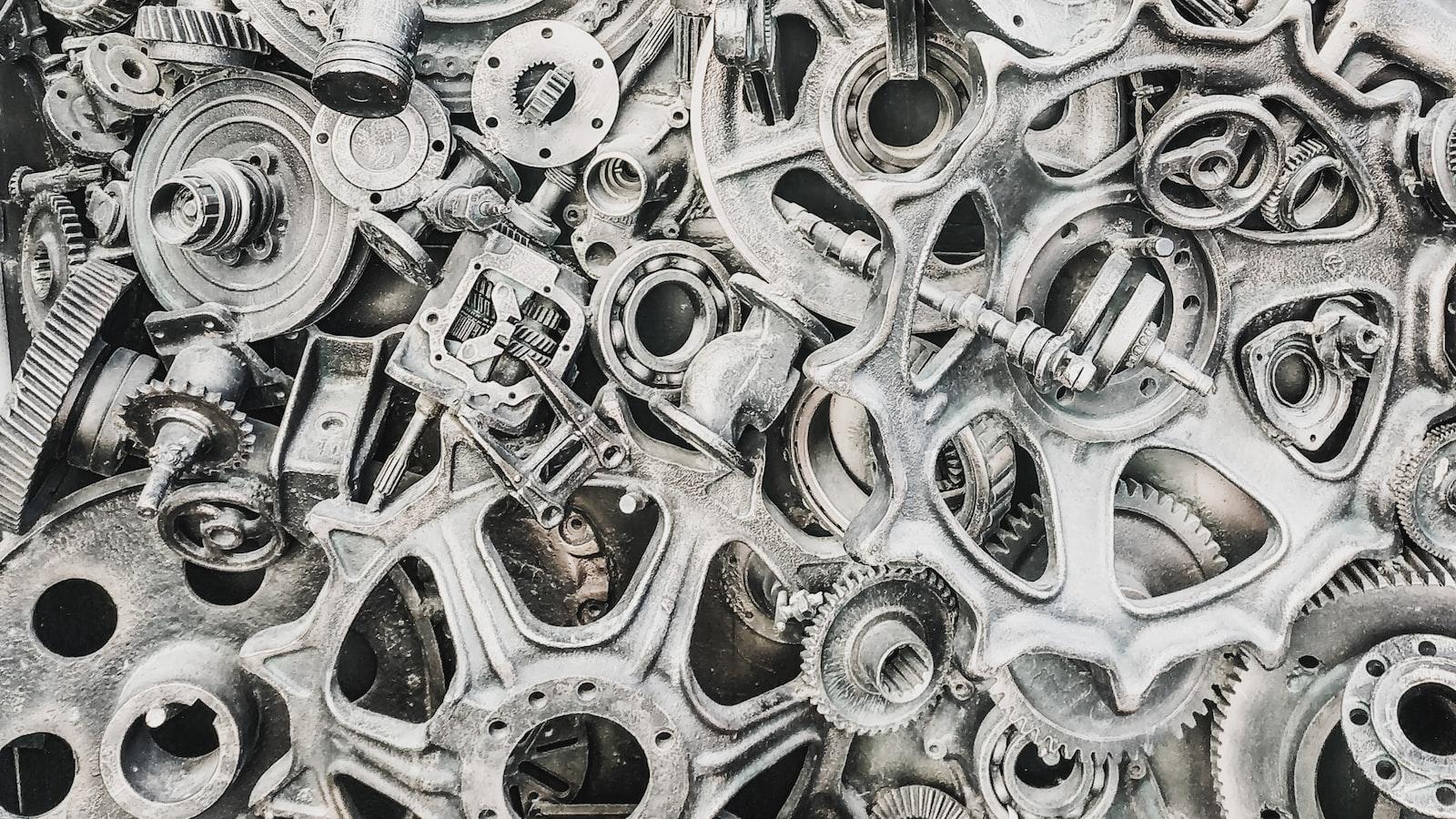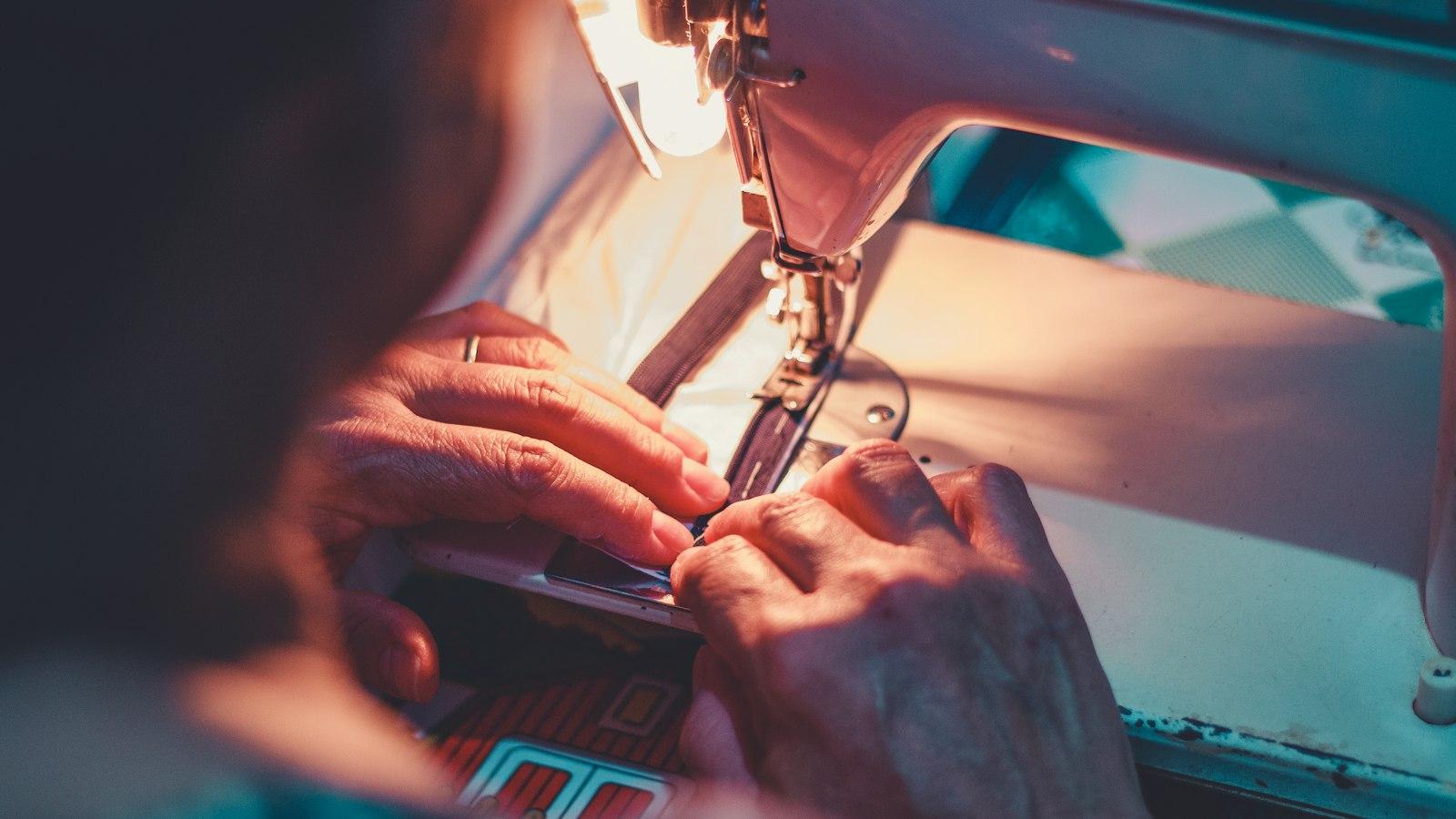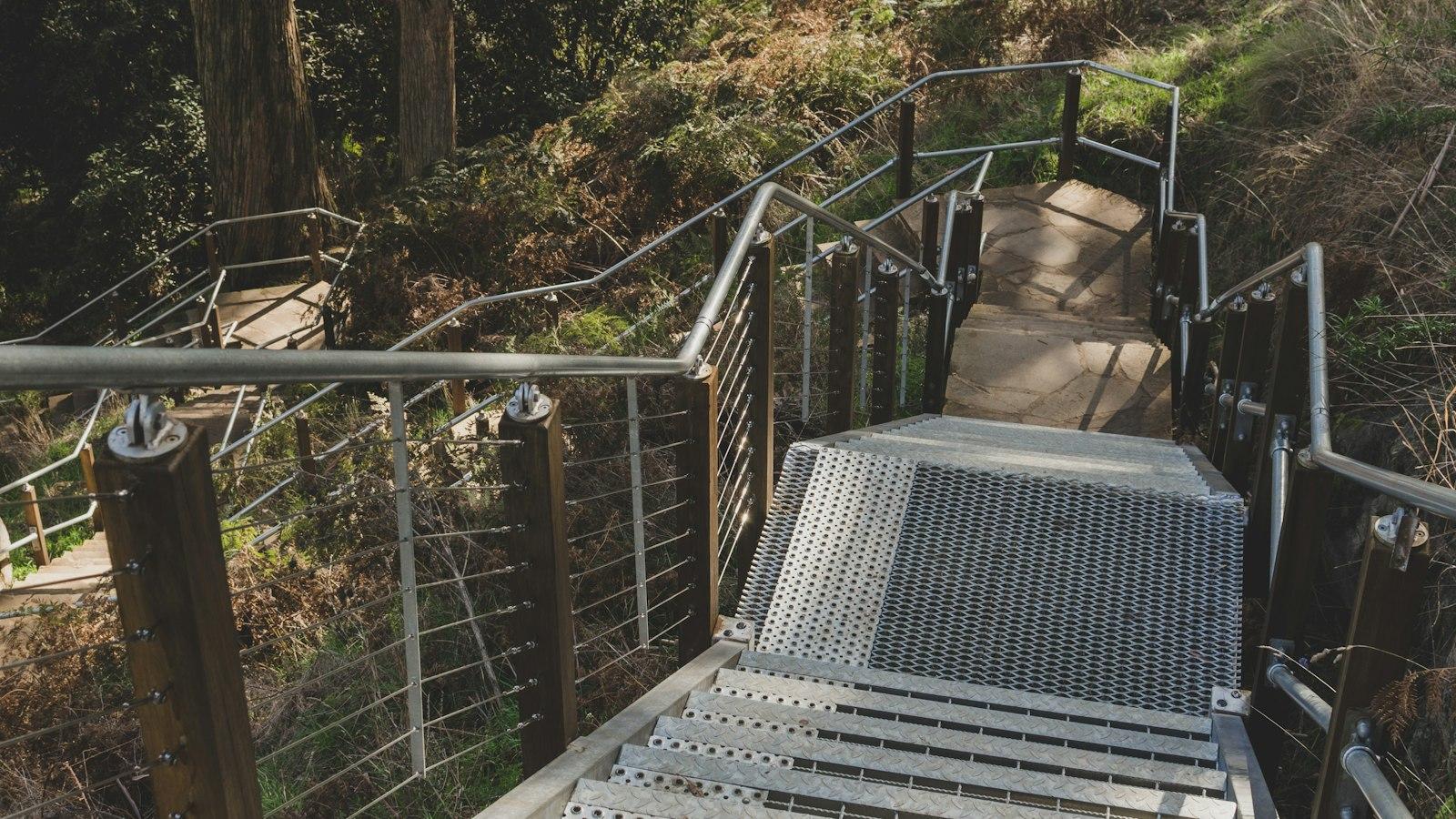
Sewing machines, an essential tool for seamstresses and hobbyists alike, have revolutionized the art of garment construction. Whether you’re a beginner or a seasoned maker, understanding how to wield this versatile machine is crucial in unleashing your creative potential. If you’re ready to embark on a fulfilling journey of threading, stitching, and creating beautiful garments, this article will serve as your comprehensive guide on how to use a sewing machine effectively. From the basic components to the intricate mechanisms, we will explore every aspect that will help you master this indispensable instrument. So, let’s dive in, unravel the mysteries of sewing machines, and enhance your sewing skills to new heights!
Benefits of Using a Sewing Machine for Beginners
Sewing machines can be a valuable tool for beginners who are just starting to learn how to sew. Not only do they make the process of sewing faster and more efficient, but they also offer a range of benefits that can help beginners improve their skills and create beautiful projects.
Time-saving:
One of the biggest advantages of using a sewing machine is that it saves a significant amount of time compared to sewing by hand. With a sewing machine, you can complete your projects in a fraction of the time it would take to sew them by hand. This allows beginners to finish their projects faster and move on to new ones.
Accuracy:
Using a sewing machine also helps beginners achieve more accurate and precise stitches. Sewing by hand can be challenging, especially for beginners who may struggle with maintaining consistent stitch lengths and tensions. A sewing machine eliminates these issues by automatically creating even stitches, resulting in neater and more professional-looking work.
Versatility:
Modern sewing machines come with a wide range of features and functions that make them incredibly versatile. They can handle different fabrics, stitch types, and even embroidery. This versatility allows beginners to experiment with various techniques and materials, expanding their sewing skills and creativity.
Efficiency and Consistency:
Sewing machines offer consistent and efficient stitching, which is especially beneficial for beginners. They ensure that each stitch is the same, allowing beginners to create neat seams and finish their projects with ease. The machine’s ability to sew at a consistent speed also helps beginners maintain a steady rhythm and achieve better results.
Professional Finishing Touches:
Sewing machines are equipped with features that enable beginners to add professional finishing touches to their projects. These features may include automatic buttonholes, zipper foot attachments, and overlock stitches that prevent fabric edges from fraying. By utilizing these features, beginners can give their projects a polished and professional look.

Understanding the Different Parts of a Sewing Machine
A sewing machine is a versatile tool that can be used for a variety of purposes. Whether you are a beginner or an experienced seamstress, is essential for the proper use and maintenance of the machine. In this post, we will go through the various components of a sewing machine and how they contribute to the overall functionality.
Needle and Needle Plate: The needle is the main component that carries the thread through the fabric. It moves up and down, creating stitches. The needle plate is a metal plate with a small hole for the needle to pass through, and it helps keep the fabric stable while sewing.
Bobbin and Bobbin Case: The bobbin is a small spool that holds the lower thread. It sits in a bobbin case, which is inserted into the machine. The bobbin thread interlocks with the upper thread to create a sturdy stitch. Always make sure to wind the bobbin correctly and insert it into the bobbin case before starting to sew.
Presser Foot: The presser foot is a metal or plastic attachment that holds the fabric in place while sewing. It applies pressure to the fabric, ensuring smooth and even stitches. There are different types of presser feet, such as a standard foot, zipper foot, buttonhole foot, and more, each designed for a specific sewing technique.
Stitch Selector and Tension Dial: The stitch selector allows you to choose from a variety of stitches, such as straight stitch, zigzag stitch, or decorative stitches, depending on your project. The tension dial controls the amount of tension on the thread and ensures balanced stitches. It is essential to adjust the tension accordingly for different fabrics and thread types.
Feed Dogs and Feed Dog Lever: The feed dogs are small metal teeth located underneath the needle plate. They move the fabric forward while sewing, creating a smooth and even feed. The feed dog lever allows you to lower or raise the feed dogs, depending on whether you want to sew in a straight line or free-motion quilt.
can greatly enhance your sewing experience. Knowing how each component works will enable you to troubleshoot any issues that may arise and make the necessary adjustments for optimal results. Take the time to familiarize yourself with your sewing machine’s parts, and you’ll be ready to tackle any sewing project with confidence. Happy sewing!

Step-by-Step Guide to Threading the Sewing Machine
Threading your sewing machine correctly is one of the essential skills every aspiring seamstress should master. Follow these simple steps to ensure smooth and successful sewing projects:
Gather Your Supplies
Before diving into the threading process, it’s important to have all the necessary supplies readily available:
- A sewing machine
- A spool of thread
- A bobbin
- A needle
- A threader (optional but helpful)
Prepare the Machine
Make sure your sewing machine is properly set up and ready to go:
- Place the spool of thread on the spool pin
- Guide the thread through the thread loop located on the top of the machine
- Move the thread towards the front of the machine and thread it through the tension disks
- Locate the bobbin case and insert a filled bobbin
Thread the Upper Thread
Threading the upper thread is a crucial step to ensure smooth needlework:
- Pass the thread through the first thread guide
- Guide the thread down, around the tension discs, and back up towards the take-up lever
- Thread the take-up lever from right to left, making sure it’s completely threaded
- Continue threading the thread through additional guides until you reach the needle
- Thread the needle from the front to the back, leaving a tail of thread
Thread the Bobbin
Properly loading and threading the bobbin is essential for stitch formation and tension:
- Hold the bobbin case in your hand and insert the bobbin into it
- Pull the thread through the tension slot, making sure it’s properly secured
- Place the bobbin case into the machine, following the machine-specific instructions
- Pull out a short length of the bobbin thread and loop it around the needle thread
- Carefully close the bobbin case and ensure it’s properly locked into place
By following these step-by-step instructions, you’ll be on your way to threading your sewing machine like a pro. Remember to refer to your machine’s manual for specific instructions and troubleshooting tips. Happy sewing!

Mastering Basic Stitches: A Comprehensive Overview
Whether you’re a sewing enthusiast or just starting out, learning how to use a sewing machine is an essential skill to master. In this comprehensive overview, we will guide you through the basics of using a sewing machine, enabling you to tackle a wide range of projects with confidence.
The Parts of a Sewing Machine
Before diving into using a sewing machine, let’s familiarize ourselves with its key components:
- Presser foot: This is the part that holds your fabric in place as you sew.
- Bobbin: The bobbin holds the thread that creates the lower stitch.
- Needle: The needle is responsible for stitching the fabric together.
- Tension control: This feature allows you to adjust the thread tension while sewing.
Threading the Machine
Threading a sewing machine can seem intimidating at first, but with a little practice, it becomes second nature. Follow these steps to properly thread your machine:
- Start by placing your thread spool on the spool pin.
- Guide the thread through the thread guides and tension control, following the machine’s threading diagram.
- Thread the needle by passing the thread through the needle’s eye from front to back.
- Pull out a few inches of thread from the needle, leaving a tail.
Adjusting Stitch Settings
Every sewing project requires different stitch settings. Here’s how you can adjust them on your sewing machine:
| Stitch Length | Stitch Width | Tension |
|---|---|---|
| Controls how long each stitch will be. | Determines the width of your stitch for zigzag or decorative stitches. | Controls the tightness or looseness of the stitch. |
| Short for tight stitches, long for loose stitches. | Increases or decreases the width of zigzag stitches. | Higher tension for tight stitches, lower tension for looser stitches. |
Sewing Machine Techniques
Now that you have a basic understanding of your sewing machine, let’s cover some techniques that will level up your sewing game:
- Straight stitching: This simple technique is perfect for seams and hems.
- Zigzag stitching: Use zigzag stitches to prevent fraying or add decorative touches.
- Buttonhole stitching: Easily create buttonholes with a buttonhole foot and a few simple steps.
- Topstitching: This technique adds a professional finish to your garments.

Troubleshooting Common Sewing Machine Issues
When it comes to sewing, having a reliable sewing machine is essential. However, even the best machines can occasionally encounter issues. In this post, we will discuss some of the most common sewing machine issues and how to troubleshoot them.
1. Tangled or Breaking Thread
One of the most frustrating issues you may encounter while using a sewing machine is tangled or breaking thread. This can be caused by a variety of factors, such as incorrect threading, using the wrong type of thread or needle, or having a dull needle. To troubleshoot this issue, try the following:
- Check that the machine is threaded correctly and that the bobbin is properly inserted.
- Ensure you are using the appropriate thread and needle for the fabric you are sewing.
- Replace the needle if it is dull or bent.
- Adjust the tension settings on your machine as needed.
2. Skipped Stitches
If you notice that your sewing machine is skipping stitches, it can result in an uneven or incomplete stitch line. This issue is often caused by a bent or incorrectly inserted needle. Here’s what you can do to fix it:
- Inspect the needle for any signs of damage and replace it if necessary.
- Make sure the needle is inserted correctly, with the flat side facing the back.
- Ensure that you are using the appropriate needle size for the fabric you are sewing.
- Check the thread tension and adjust it if needed.
3. Uneven Stitching
If your stitches are coming out uneven, it can make your finished project look unprofessional. Uneven stitches are often caused by improper thread tension or using the wrong type of needle. Follow these steps to fix this issue:
- Check the thread tension and adjust it. Loosen the tension if the upper thread shows on the bottom side of the fabric, and tighten it if the bobbin thread shows on the top side.
- Ensure that you are using the right needle for your fabric. Use a ballpoint needle for knits and a sharp needle for woven fabrics.
- Try slowing down your sewing speed to see if that improves the stitching.
4. Machine Jamming
A sewing machine jam can occur when fabric gets stuck in the machine, causing it to stop working. If you are faced with this issue, try the following:
- Turn off the sewing machine and unplug it.
- Carefully remove the fabric and any broken threads from the machine.
- Clean out any lint or debris that may be clogging the machine.
- Ensure that the bobbin is correctly inserted.
5. Noisy Operation
If your sewing machine is making excessive noise while in use, it can be a sign of a problem. Here are a few troubleshooting steps to address this issue:
- Check that the machine is properly oiled. Follow the manufacturer’s instructions for oiling the machine.
- Inspect the needle for damage and replace it if needed.
- Make sure the machine is correctly threaded.
- Check for any loose or missing parts and tighten or replace them as necessary.
Q&A
Q: What is a sewing machine?
A: A sewing machine is a mechanical or computerized device used to stitch fabric and other materials together with the help of a needle and thread. It automates the process of sewing, making it faster and more efficient than sewing by hand.
Q: How do I choose the right sewing machine for my needs?
A: When selecting a sewing machine, consider factors such as your sewing experience, the type of projects you plan to work on, and your budget. Research different models, compare features, and read customer reviews to make an informed decision. Additionally, consider consulting with experts at sewing machine stores who can provide guidance based on your specific requirements.
Q: What are the basic components of a sewing machine?
A: A typical sewing machine consists of various key components. These include the needle, presser foot, bobbin, stitch length and width controls, tension control, and a feeding mechanism. Additionally, newer models offer advanced features such as automatic threading, multiple stitch options, and adjustable sewing speed.
Q: How do I thread a sewing machine?
A: Threading a sewing machine can vary depending on the specific model you own. Generally, it involves winding the bobbin with thread, threading it through the appropriate guides, and threading the upper thread through the needle. Refer to your machine’s user manual for detailed instructions, as each machine may have slight variations in threading steps.
Q: How do I sew a straight stitch?
A: To sew a straight stitch on a sewing machine, start by aligning the fabric under the presser foot. Lower the presser foot to secure the fabric in place. Then, select the straight stitch option on your machine and adjust the stitch length if necessary. Slowly press the foot pedal to begin sewing while guiding the fabric evenly through the machine. Remember to keep your hands away from the needle and always sew at a steady pace.
Q: What are some common troubleshooting tips for sewing machine issues?
A: If you encounter issues with your sewing machine, there are a few troubleshooting tips you can try. Firstly, make sure the machine is properly threaded and the needle is not bent or damaged. Check the bobbin for any loose threads or tangles and rethread if needed. Adjusting the tension settings and using the appropriate needle and thread for your fabric can also help resolve stitching problems. Always refer to your machine’s user manual for specific troubleshooting guidance.
Q: What maintenance routines should I follow for my sewing machine?
A: To keep your sewing machine in proper working condition, regular maintenance is key. Some recommended maintenance practices include cleaning the machine after each use to remove lint and dust, oiling the moving parts as per the manufacturer’s instructions, checking and replacing needles when necessary, and storing the machine in a clean and dry environment when not in use.
Q: How can I enhance my sewing skills and learn new techniques?
A: To hone your sewing skills and explore new techniques, consider joining local sewing classes or workshops, either in-person or online. Many sewing communities and websites offer tutorials, videos, and patterns for beginners and advanced sewers. Additionally, practice regularly on different types of projects to learn and improve your skills gradually. Don’t be afraid to experiment and explore new ideas! In summary, learning how to use a sewing machine is a valuable skill that can open up a world of possibilities in the realm of fabric crafts and garment making. By understanding the various parts of the machine, mastering basic functions, and practicing different stitches, you will be well on your way to creating beautifully stitched projects. Remember to always refer to the user manual for specific instructions pertaining to your sewing machine model and make sure to practice safety precautions when operating the machine. With time and practice, your proficiency with the sewing machine will improve, enabling you to explore more complex sewing projects and unleash your creativity. Embark on this exciting journey of sewing and discover the joy of turning your ideas into tangible pieces of art. Happy sewing!






